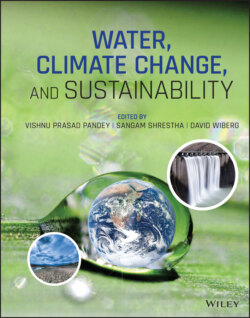Читать книгу Water, Climate Change, and Sustainability - Группа авторов - Страница 39
3.2. WATER SUPPLY AND USE IN BIO‐BASED SYSTEMS 3.2.1. Water Availability
ОглавлениеMore than two thirds of the earth’s surface is covered with water (USGS, 2016). However, ~97.5% of that is saltwater which cannot be used for industrial, agricultural, or residential purposes. Of the remaining freshwater, ~1.75% is frozen in glaciers, and the rest is available as ground water (~0.68%) and freshwater in lakes and rivers (0.07%) (USGS, 2016). Freshwater is used for residential purposes (11%), industries (19%), and agriculture (70%) (FAO, 2016). Water is essential in all sectors, and bio‐based systems utilize large quantities of water, increasing the pressure on this already scarce resource. Water in bio‐based systems is not the most expensive input; however, unlike other resources, it has no substitutes. Water is required at different stages in bio‐based systems, from irrigation during biomass production up to recovery of the final products after biomass processing. However, water consumed during biomass production and processing have different intensities of water use. Water used for irrigation during biomass production is consumed in the process, which means no wastewater is generated. However, some of the water used during the processing may be reused by wastewater treatment and purification processes. Steam used in the process can also be reused after being condensed to water.
